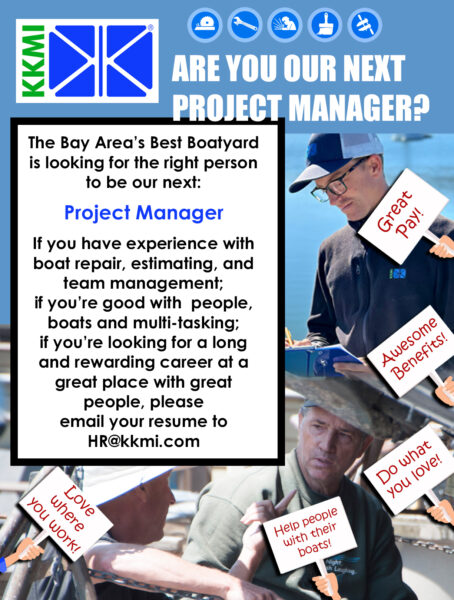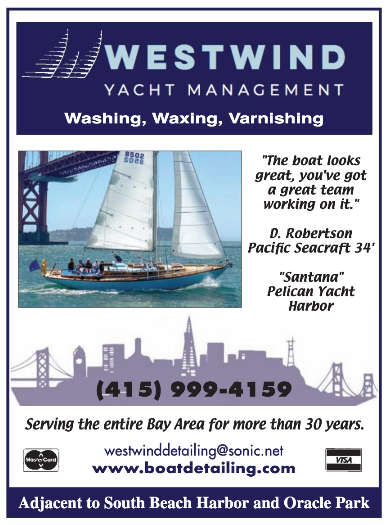
Not an April Fools’ Joke: Print Is Alive, and so Is Latitude 38
Faced with another grueling deadline, a meager paycheck, a few angry readers and no time to sail or live the life we write about, I considered ending it all as a Latitude editor. Despondent, I walked to a bridge, peered over the side into the abyss and considered ending it all. It was time to jump …
… Into another career. Maybe I could be a truck driver? How about coding, or becoming a dental assistant? Just please, God, don’t make me edit another issue of Latitude 38.
Looking out on the empty, sailboat-less Bay, I wondered, “Who are we doing this for?” This is the most common thing I hear when I tell people that I work at Latitude (and this is true): “Latitude 38? I used to read that all the time.”
What would the world look like if there had never been Latitude 38 magazine? Would it be a dystopia of sailing-less-ness?
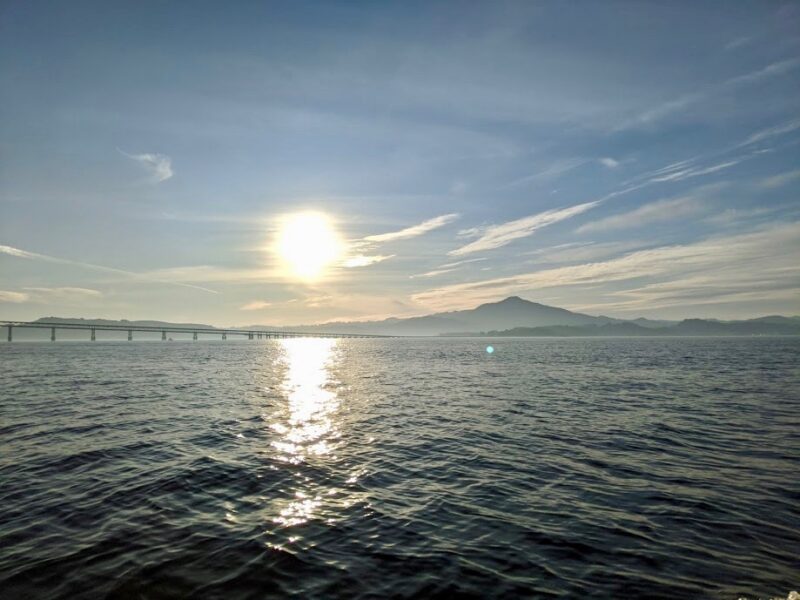
For the past six April Fools’ Days, Latitude has written headlines that are both absurd and in the realm of probability — think of them as worst-case scenarios emanating from the current body politic. “State Proposes a Ban on Sailing” read one headline; “State Will Impose High-Impact Waterfront Development” read another. They were fun, clickbaity, shock-value stories to write that reliably garnered alarmed comments.
Ha ha, April Fools. Got you. Aren’t we sooo hilarious?
Following the semi-logical extension of real-world policy to its dystopian-for-recreational-sailing conclusion, we reasoned that waterfront development, well-meaning but ultimately draconian environmental laws, local governments’ lack of understanding about recreational sailing and marine businesses, and yes, the persistent declining participation in the sport and lifestyle would ultimately lead to the disappearance of sailing as we know it.
But sailing as we knew it — what we call the Golden Era in the ’70s and ’80s when a large percentage of middle-class families had 25- to 35-ft racers and/or cruisers — has been long gone for decades. It’s not just the lifestyle, but the middle class as well. The future of the sport or lifestyle is uncertain.
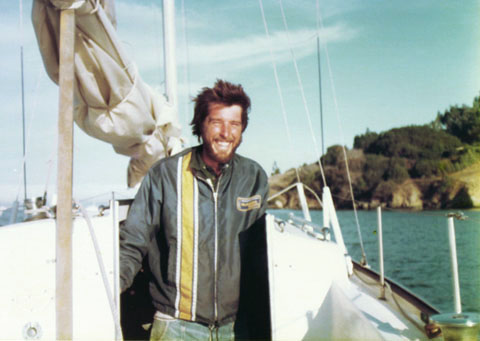
We’ve never satirized the challenges facing print media on April 1, and I was tempted to write the headline: Latitude To Halt Printing Indefinitely, but that idea was wisely discouraged. Besides, no one wants to hear us bitch about how hard our jobs are or how unwise our career choices have been.
With that said, how would you have reacted, dear reader, if you had read that headline? What does Latitude mean to you? Where does it fit into your life?
When Latitude 38 was founded by Richard Spindler 47 years ago (to the month!), the sailing world was ripe for the picking, as was the publishing world. We were in that Golden Era (well, I was two years old), and the sailing world seemed to need an iconoclast, someone to raise their middle finger to the powers that be, especially the nascent state authority. (That’s you, BCDC.)
It wasn’t just Spindler’s searing prose and humor, and it wasn’t just the pages showing beautiful humans — mostly women, but a few men — in the buff. It was the media landscape. Latitude was a diamond in the rough — people lined up to get new issues on delivery days. Today, there are at least 10 Facebook sailing groups for every one page of our magazine. Everyone’s bandwidth is taxed. The media supply is infinite while demand is lost to the infinity of the internet.
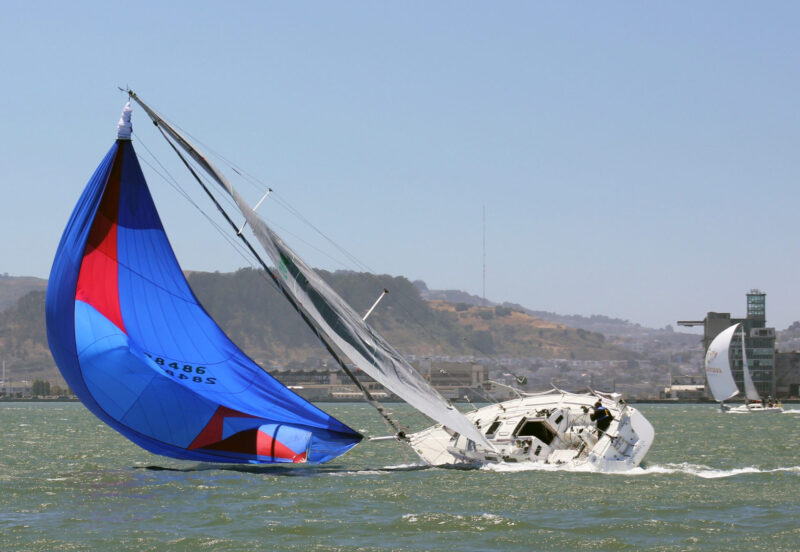
Sometimes — but not often — we get slightly indignant emails from readers who are upset that we didn’t cover an event. Do people think that we have a full-time correspondent driving around to the many, many regattas, seminars, visiting boats, and award ceremonies that take place each and every week, year ’round, not just here in the Bay Area, but all along the West Coast, including SoCal, MidCal, Oregon, Washington, Alaska, Mexico and Hawaii? Do people expect us to be at each and every event, but also expect the magazine to be free?
Even in its heyday, Latitude 38 was a contributor-driven publication. We counted on people to send us photos and a handful of words. We would work our editorial magic, and presto, you’d be in the magazine. We can only hope people realize that this is still the editorial model. If you’re part of a sailing Facebook group or other social network, we hope that you’ll consider keeping us in the loop.
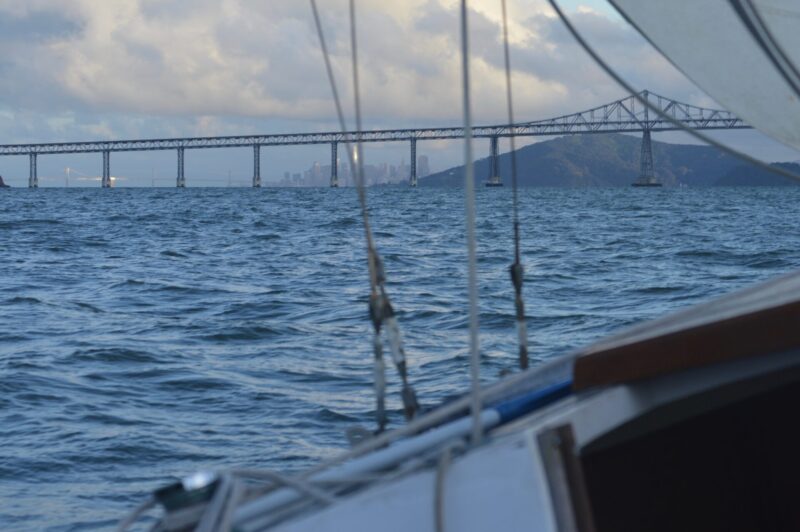
Standing on the bridge, I put away my phone. No, I do want to be a Latitude editor, which is to say that I want to be part of this community. Everyone who works here wants this glorious art project to succeed, to resonate, to reach an audience, and to connect you, dear sailors, with one another.
We want to connect you to the wonders of nature and the joy of sailing. We want the magazine in your bathrooms and heads and living rooms and saloons. Once you’ve read it, we want you to tear up the mag for boat maintenance (“It’s great for keeping oil off the deck when I service my winches,” said one reader), to start a bonfire on the beach, or — God forbid — if you run out of toilet paper … well, you know what to do.
You can support Latitude 38’s commitment to West Coast sailors and sailing news when you click here.
- West Coast Sailing
- General Sailing
- Cruising
- Latitude 38 Magazine
- Current News
- Heading South
- Community Sailing
Svendsen’s Spring Fling Show Is Nearly Here — No Joke!
It’s happening again! The third annual Svendsen’s Spring Fling Show is on soon — April 12–13. This two-day, weekend event has become a favorite among sailors and exhibitors. It’s a good time to catch up with who’s doing what in the world of sailboat hardware and equipment, see what the local sailing clubs and sailing schools are up to, get the latest news and info at the sailing seminars, view demonstrations, and of course enjoy great company and good food.
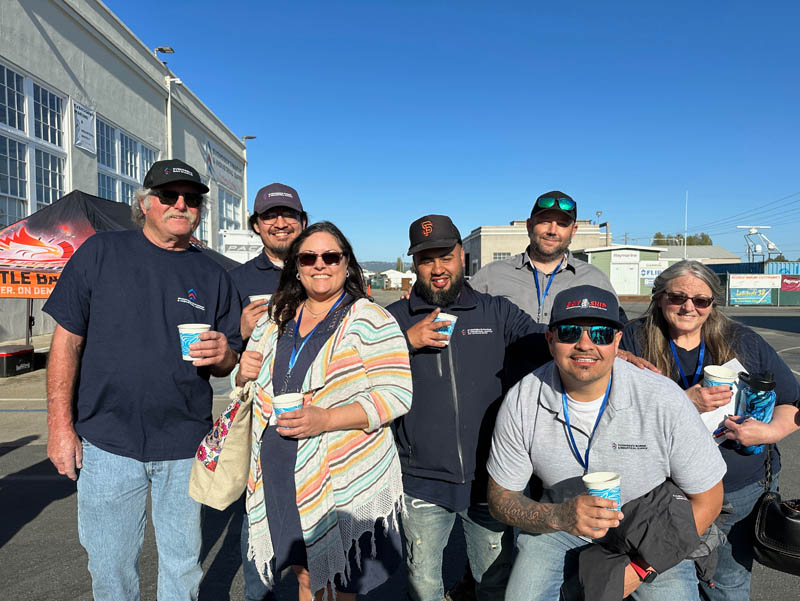
This year there’s a new Marine Exploration Corner hosted by the Sailing Science Center with hands-on learning experiences and interactive demonstrations— your kids will love it. So will you!
We’ll be there — join us for for a weekend filled with all things marine.
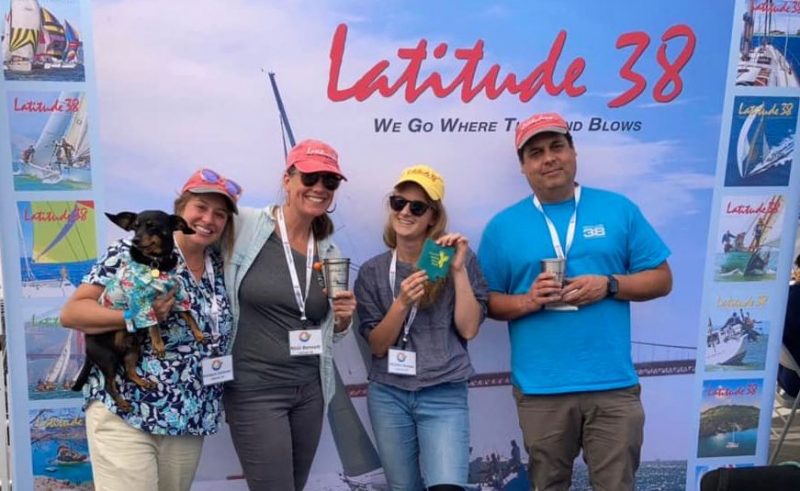
Seminars and demonstrations will include vacuum-bagging and infusion, live Propspeed application, PFD safety, and Mexico cruising.
For the first time since COVID shut everything down you’ll have access to one of the most sought-after seminars from the old Jack London Square to the Richmond Pavilion: “What’s it REALLY like sailing along the California and Baja coasts, the Sea of Cortez and mainland Mexico’s coast?”
Pat and Carole McIntosh have done just that, and they’ve been helping other sailors do it for about 20 years. Download their free book, Cruising Notes: Things To Know Before You Go. Then attend their seminar and ask them all the questions you want: what it will cost, taking care of your house and mail, finding THE boat, keeping safe, spare parts, provisions, tacos, overnight passages, travel in Mexico, the fun in Barra, and more. They’re back from Mexico just in time for this special presentation.
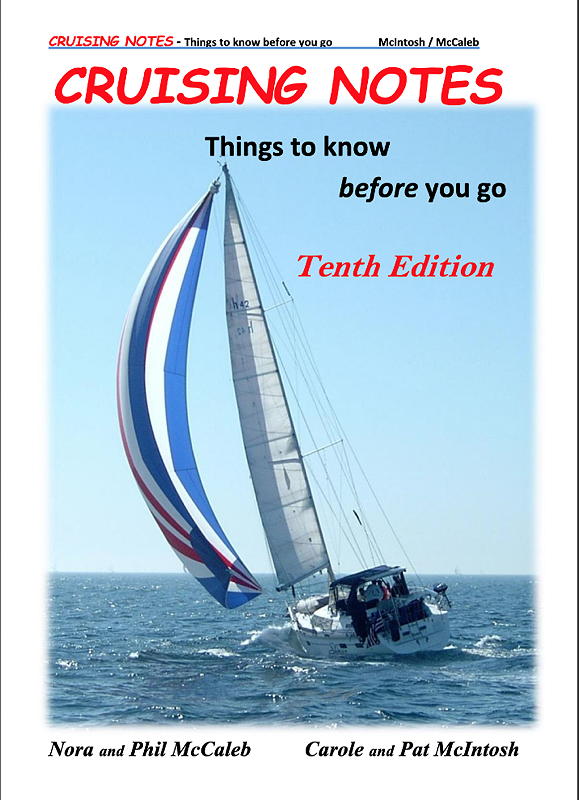
Whether you’re a seasoned sailor or just dipping your toes into the marine world, you’re sure to find something of interest. Distributors will be demonstrating and selling the latest and greatest sailing gear, gadgets, electronics, and water sports equipment.
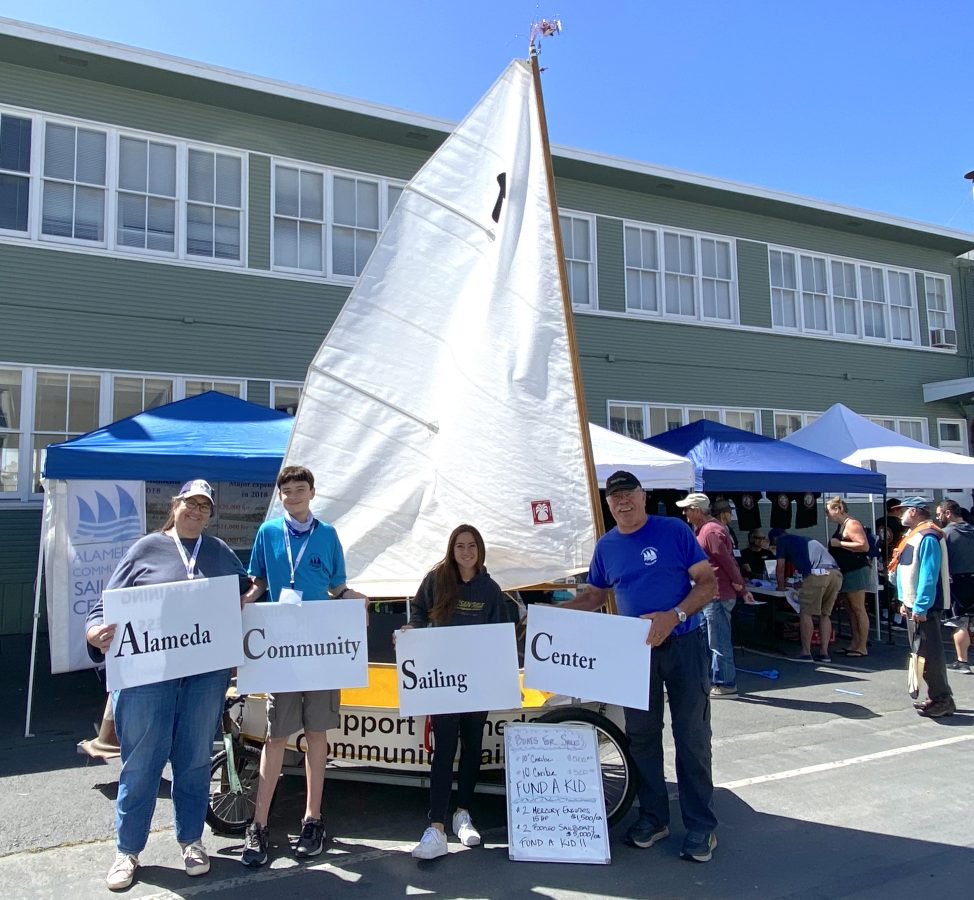
See you there?
Svendsen’s Spring Fling tickets are $10 and are valid for both Friday and Saturday. Plus, you can redeem your ticket as a coupon for $15 off a Svendsen’s store purchase! Children 18 and under are free.
Dates:
Friday, April 12, 9 a.m.–6 p.m.
Saturday, April 13, 9 a.m.–4 p.m.
Where:
Svendsen’s Marine & Industrial Supply, 2900 Main Street #1900, Alameda, CA.
Check out the details and get your tickets at Svendsen’s Spring Fling Show.
KKMI is Hiring a Project Manager
Crew Assignments on the Waggen
The skipper looked over his new crew. “Good morning, everyone. I’m Louis Kannen and this is the H.A.F.-designed sprit yawl Waggen. I don’t know why that’s her name; perhaps she was fleet pooch for many years. So, let’s get on with introductions.
“This is Bert Wood, my first mate. Mr. Wood’s experience is entirely with plastic boats, the latest one looking somewhat like a carry-out container with canvas.
“During my previous journeys on this boat, we did many MOB drills. It is my sworn duty no one shall fall off the Waggen. I run a tight ship despite prior skippers saying there’ll be no Louis Kannens on the yacht.
“Now I would like each of you to introduce yourselves and state your experience.”
One by one Len Baumann, Howard Leech, Russell “Rusty” Rutter, twins Steven and Sam Poole, Alex Helm, Red “Rolly” Stearn, Daniel Zhing (a Cantonese), Lance Hull, Phillip “Slim” Kiel, Arnold Tillor and Douglas Sales (“Like Soupy Sales,” he said) each told the skipper about his experience.
“Gentlemen, judging by your statements, here’s where you’ll be stationed while on board:
“Len Baumann is at the pushpit, Steve and Sam Poole check the bilge, Lance tunes the mast, Rolly is needed at the sprit, Slim needs to check the mainmast head, Rusty needs to look at the upper spreaders, Alex needs to look forward below the waterline, Doug check the underwater foils, Arnie is at the inner forestay, and Howard at outer forestay.”
As late arrivals, brothers John and Bill Walker were told to check the runners.
Wood inquired again about the bilge. “Pooles should be in the bilge,” said Kannen.
To other crew who raised questions: Alex was to assist Doug Sales below the waterline and later help Dan Zhing with the spars.
Kannen stated that they should check the crew assignment diagram and familiarize themselves with the boat:
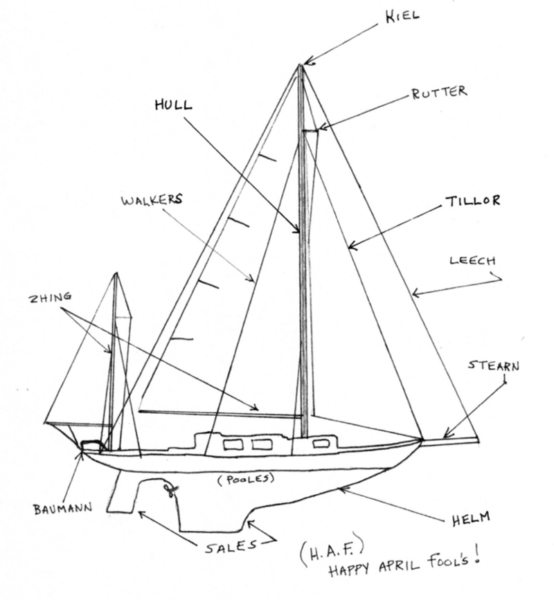
2028 America’s Cup To Be Held Entirely in Virtual Reality
After a recent meeting at the New York Yacht Club, the current America’s Cup teams revealed that the next America’s Cup would be held entirely in a virtual environment. “It only makes sense,” said Emirates Team New Zealand syndicate head Grant Dalton, who continued, “95% of the time between America’s Cup events is done with computer simulators and I think it’s really the right time to just eliminate the last 5% that is done on the water. Very few of the people on the boats are actually sailors, and as everyone knows, it’s really all about who can design the fastest boat.”
The meeting was initially called to debate a proposal from New York Yacht Club staff commodores to return the Cup to IACC boats or even 12 meters, since so many club members have never understood how boats can go around a race course and never go downwind. That proposal quickly went off course when a younger member reminded the gathered group that the “future is foiling.” It was at this point that INEOS Team UK CEO Sir Ben Ainslie spoke up, saying, “If I really think about it, ever since I stopped racing Finns the majority of my time has been involved in design and HR meetings. I don’t really spend time on the water anymore. The primary thing we’re doing in our design meetings is to optimize all the design variables and eliminate as many of the things we can’t control. When it comes down to it, one of the biggest, hard-to-control variables is people.”
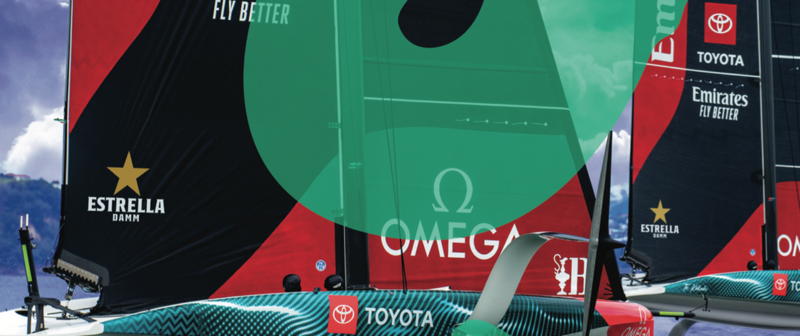
That was when Dalton chimed in, saying, “The people component has always been a huge headache for me, which is what got me to thinking about moving to a virtual America’s Cup.” As he stated, “People have been my number-one problem. I’ve had the entire nation of New Zealand against me since I moved the Cup to Barcelona. If we do the event virtually we could essentially hold the Cup anywhere without having to build infrastructure. If you all think about it, we could please all the Cup sponsors by holding the Louis Vuitton Cup in a rotating series of races that are held in each syndicate nation’s chosen port without having to bring boats there. Then I could hold the Cup final out of Viaduct Basin, though we wouldn’t have to deal with the awkward, out-of-sync-with-the-world seasons and time zone.”
After that bold statement, there was a dramatic shift in tone in the room as syndicate leaders thought of the many pain points that would be relieved by not actually having to build a boat, ship it around the world, hire a few sailors, and put human life at risk on the water. Terry Hutchinson spoke up saying, “If our crash in New Zealand had happened in the virtual world, the repairs would have taken far less time and we could have continued in the series.” Alinghi Red Bull team chief Ernesto Bertarelli chimed in, saying, “I really could satisfy the Deed of Trust by creating a virtual ‘arm of the ocean’ in Switzerland so we could host in our home country. I don’t have time to wait for climate change to do it for me.” One of the design engineers in attendance spoke up, suggesting, “If we eliminate the constraints of hydrodynamics we could probably get these boats to go much faster than 60 knots, so the average race could fit comfortably into the average viewer’s scroll through their Instagram reels.” The French Team Orient Express suggested that it would also be much easier to have gender parity since physical strength would no longer be a factor.
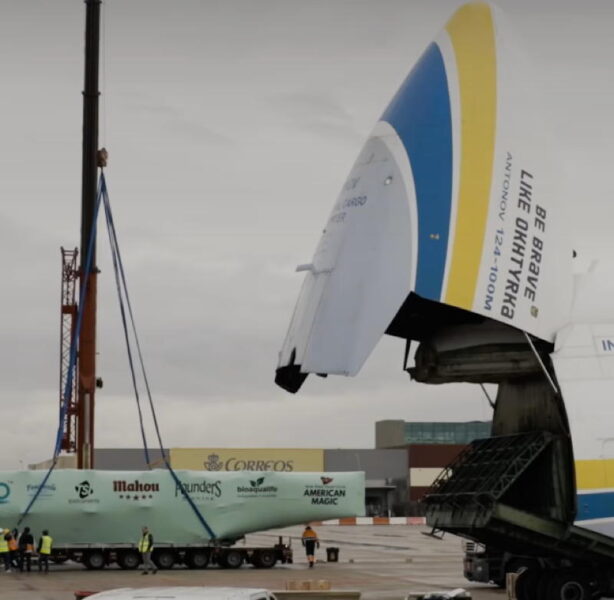
It was then that Ainslie was reminded of everyone’s commitment to sustainability and suggested that by going virtual, INEOS Team UK could dramatically lower its carbon footprint. He said, “By not having to build a boat, hire sailors and ship it all over the world we’d lower our carbon footprint and lower our costs so we’d have a lot more flexibility when selecting sponsors. Additionally, we’d be able to eliminate all the spying and design-secrecy aspects, since we’d never have to reveal an actual boat.” As the assembled team representatives started to relax and imagine the reduced strain on themselves as they let go of dealing with the physical world and all the HR issues, the conversation turned to whether this would all be done with Apple Vision Pro goggles and other elements of managing the technology, game consoles and digital dashboards that would help monetize the eyeballs. They could create true stadium sailing without the constraints of shallow water, wind shadows from buildings and uneven currents across the course.
A few syndicate heads slipped out of the room to get a head start recruiting gamers from the professional video game world of League of Legends and Fortnite, while Prada and LVMH started designing apparel for the avatars of the virtual sailors who could purchase virtual boats to race alongside the America’s Cup teams. Moët & Chandon was already looking into home delivery for champagne. The brands could now see value in their sponsorship with the rapid expansion of participation in sailing, since expense and seasickness would no longer keep the masses away.

After one of the wait staff, who spends his free time volunteering at the Sail Newport community sailing center, leaked the tone of the conversation, a sailor at the club bar said, “I’m not surprised. It already feels that way since the digital graphics and animation make me feel like I’m in the office doing a global screen share on Zoom rather than watching a sailing competition. I really get enough screen time.” Another chimed in, “I’m never quite sure what’s real anymore. With all the AI animation and enhanced video effects that come through screens, I find I really need to go down to my boat, haul up some sails, and taste the salt water in the spray to make sure I’m still on Planet Earth.”
While the AC meeting was breaking up and the representatives were rapidly texting secure messages over their VPNs, the two sailors decided to shut off their iPhones and head out for a quiet sail with the local fleet of 1962 Shields one designs. Several other fleet members were out, and they had some casual, fun practice races by rounding a physical buoy and hoisting spinnakers while watching the puffs on the water, the compass, and telltales on the shrouds to keep an eye on the subtle shifts in the breeze.
As today is April 1, we’re going to take a pause before we believe the story we just shared.
Westwind Yacht Management — Washing, Waxing and Varnishing
Westwind Yacht Management: Premiere Yacht & Fleet services for the San Francisco Bay Area.

